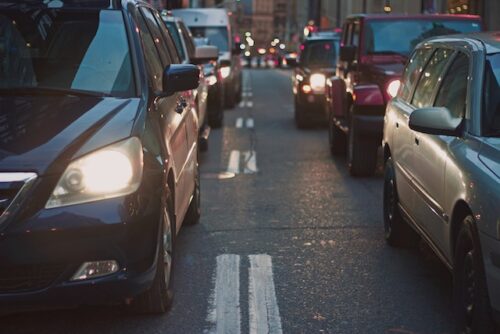
New Jersey, with its proximity to major cities and a dense network of highways, frequently grapples with traffic congestion. As vehicles inch forward bumper to bumper, many drivers feel a mix of impatience and frustration. But beyond mere inconvenience, how does this traffic congestion contribute to auto accidents in the Garden State? Read on and reach out to our dedicated New Jersey auto accident lawyers to learn more.
What Role Does Limited Reaction Time in Traffic Congestion Play?
In congested traffic conditions, vehicles often move closely together. This closeness reduces the reaction time drivers have to unexpected stops or sudden maneuvers by other vehicles. With mere seconds – or less – to react, collisions become more probable.
How Does Driver Impatience Contribute?
Let’s face it: No one enjoys being stuck in traffic. But how might impatience escalate risks?
- Quick Lane Changes: Some drivers, eager to get ahead even by a few car lengths, might switch lanes abruptly without adequate signaling or checking blind spots.
- Tailgating: Impatient drivers might follow the vehicle ahead too closely, hoping to urge them to move faster. This aggressive behavior increases the risk of rear-end collisions, especially if traffic suddenly halts.
Are Distracted Drivers More Prevalent in Traffic Jams?
Absolutely. When vehicles move slowly or are at a standstill, some drivers feel it’s safe to check their phones, adjust their infotainment systems, or engage in other distractions. While they might believe they’re making good use of the “downtime,” even a brief distraction can lead to an oversight, resulting in an accident.
How Do Merging and Intersections Exacerbate the Situation?
In areas of high congestion, especially near on-ramps or major intersections, vehicles merge into traffic. Differences in speed and the need to find a gap in the traffic flow can lead to:
- Sudden Braking: If a merging driver misjudges the flow, they might brake suddenly, causing a chain reaction in the vehicles behind.
- Side-Swipe Accidents: If two vehicles try to merge into the same lane space simultaneously, it can lead to side-swipe collisions.
Can Environmental Factors Intensify Congestion-Related Accidents?
Certainly. When congestion coincides with unfavorable weather conditions, such as rain or fog, the risks compound. Wet roads reduce tire grip, and limited visibility means drivers might not recognize slowdowns or stops in time to avoid a collision.
Traffic congestion, a common occurrence in New Jersey, undeniably contributes to the prevalence of auto accidents. Understanding the reasons behind this can not only make us more informed drivers but also guide us in adopting safer driving habits. If you find yourself, unfortunately, involved in an accident due to such conditions, it’s essential to consult with a knowledgeable New Jersey personal injury lawyer who can advise you on the best steps moving forward.
